- PROCESS PLANT OPERATORS
- INDUSTRIAL MAINTENANCE
- COMMUNITY COLLEGES
REFRIGERATION CYCLE ANIMATION VIDEO / VAPOR
COMPRESSION CYCLE EXPLAINED
A Refrigeration Cycle Explained involves the Cooling System process of Refrigerators and Air Conditioners. The Vapor Compression Cycle explained is the most common type of system used in Refrigeration and Air Conditioning.
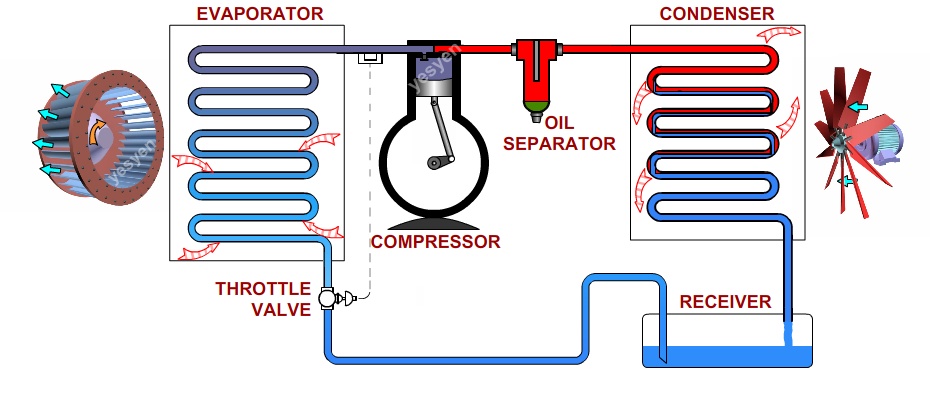
Animation VIDEO
BASIC REFRIGERATION - VAPOR COMPRESSION CYCLE
(The above video that briefly explains the Refrigeration Cycle is a SIMPLIFIED extract [for
video] from the Refrigeration Training Course listed in the 'Training Courses' page)
Refrigeration systems are primarily of 2 types:
- Vapor Compression System
- Vapor Absorption System
The Vapor Compression cycle is explained in the Refrigeration Cycle Animation video above.
The Basic Refrigeration Cycle explained below involves the following Components and respective functions:
1- Evaporator:
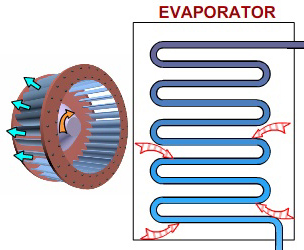
A Refrigeration system cools the surrounding by the evaporation of a medium called refrigerant. At a corresponding pressure the refrigerant evaporates at room temperature by absorbing heat from the surroundings thus cooling the same. In the Refrigeration cycle system the refrigerant evaporates in the component called evaporator to provide cooling. The cooled air can be blown by fans / blowers as in air conditioners.
2- The refrigerant that vaporizes has to be recovered for conversion to liquid phase for reuse. The 2 Refrigeration cycles as explained below primarily differ in this process of vapor recovery.
2a- Compressor (Vapor Compression Cycle):
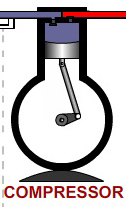
In this Refrigeration cycle system the refrigerant vapor from the evaporator is sucked in by a compressor which then compresses the vapor to a higher pressure. Hence the system is called a vapor compression cycle. The vapor is raised to a pressure such that its corresponding boiling (condensing) point temperature becomes higher than that of a cooling medium like water or air available at atmospheric temperature. The Refrigeration Cycle Animation in Video above describes this process.
2b- Absorber and Generator (Vapor Absorption Cycle)
In this cycle an absorber - Generator system replaces the compressor of the vapor compression cycle. An absorber with absorbent material is used to absorb the refrigerant vapor from the evaporator. The discharge action of the compressor is replaced by a generator. The generator, which is at higher pressure, receives energy from an external heat source to separate the refrigerant vapor from the absorbent.
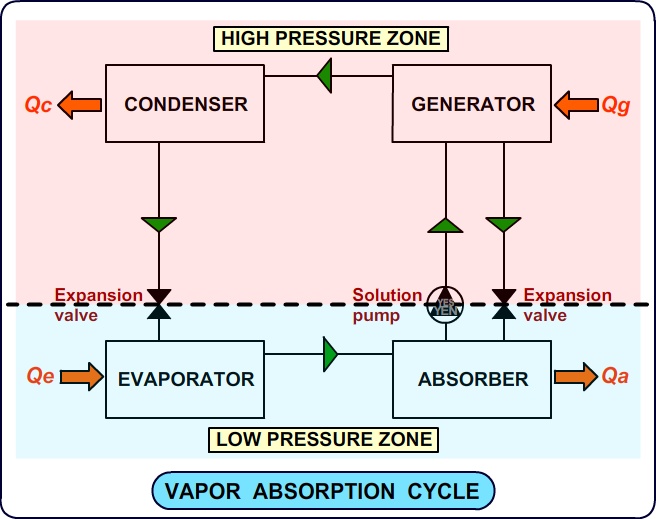
3- Condenser:
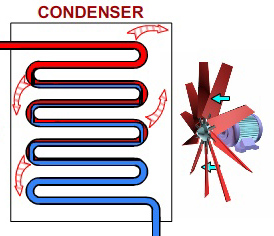
In the condenser the refrigerant vapor that is at higher pressure is cooled by a cooling medium available at atmospheric temperature like water or air. The condenser is the component in the refrigeration cycle where the refrigerant vapor is condensed to liquid state.
4- Throttle (Expansion) valve:
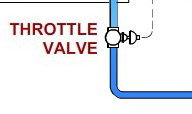
Refrigerant liquid from condenser is directed to the expansion valve. In the expansion valve, the refrigerant liquid at high pressure drops to the lower pressure required at the evaporator and is directed to the evaporator.
The above steps and processses describes the basic refrigeration cycle comprising of the evaporator, compressor, condenser and throttle (expansion) valve.
The refrigeration cycle video above explains the working principle of refrigeration and describes the various components and respective functions of a vapor compression cycle with step-by-step animated explanation.
For a Detailed Training on Refrigeration & Air
Conditioning
with Extensive Animations and Graphics, that describes the
- Basics (includes Mollier diagrams and Pyschrometric charts)
- Working Principle (both vapor compression & absorption
cycles)
- Components (Compressors, Evaporators, Condensers,
Throttling devices, etc.)
and gives a Practical Understanding probably to a level
never achieved before, avail the
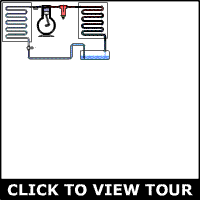
TRAINING COURSE ON REFRIGERATION & AIR CONDITIONING